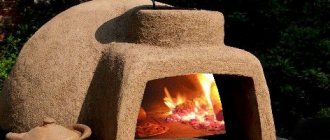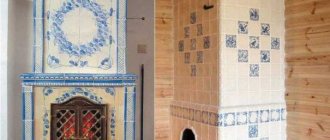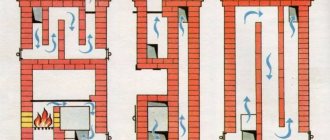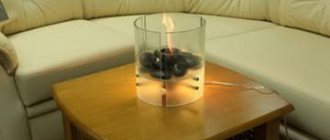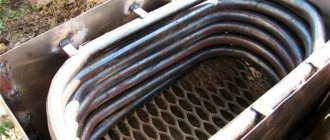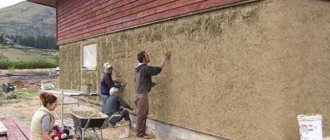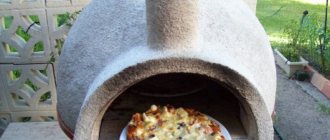How to make refractory bricks with your own hands (step-by-step instructions)
Refractory (i.e. fireclay) bricks are used for industrial and domestic construction. This material contains up to 70% chamotte, which is a fireproof clay.
The material is used to build buildings that will be exposed to high temperatures. It is suitable for building barbecues, bathhouses, stoves and fireplaces with your own hands.
Fireproof is a material that can operate without loss even at high temperatures.
Advantages of modeling clay
You can watch a video on how to make clay with your own hands. This will provide some benefits:
- a person clearly sees in what sequence the craft is made;
- there is an opportunity to familiarize yourself in detail with each stage of the production process;
- in each instruction the number of necessary elements is calculated in advance;
- a person gets the opportunity to watch a video of the production process several times and see the final result.
Using video lessons allows you to independently learn how to prepare the desired type of clay and sculpt the desired craft.
A person has the opportunity to familiarize himself in advance with the list of necessary tools and possible pitfalls.
Having studied the technology in detail, you can begin baking your craft and applying appropriate painting to it.
As a result, you get the desired craft, which can be used to decorate your home interior or as a gift. As a bonus, a person gets a lot of pleasure and saves on the family budget!
How to make refractory bricks with your own hands: step-by-step instructions
How to make refractory bricks with your own hands (step-by-step instructions)
Refractory (i.e. fireclay) bricks are used for industrial and domestic construction. This material contains up to 70% chamotte, which is a fireproof clay.
The material is used to build buildings that will be exposed to high temperatures. It is suitable for building barbecues, bathhouses, stoves and fireplaces with your own hands.
Fireproof is a material that can operate without loss even at high temperatures.
Technical parameters and properties
The characteristics of fireclay clay from each manufacturer must comply with the standards of GOST 6137-8, which determines the main parameters of the product:
- the color of the dry fireclay mixture is gray, the structure of the product is free-flowing, without lumps or large conglomerates;
- grain diameter fraction – approximately 2 mm;
- highly burnt fireclay has a moisture absorption coefficient of 2 to 10%;
- low-burnt fireclay has a moisture content coefficient within 25%;
- the total moisture content of the product should not exceed 5%;
- The melting temperature ranges from 1550 to 1850°C.
The shelf life of dry fireclay composition does not exceed 3 years when stored in dry and tightly closed packaging. Fireclay clay mixtures are used for laying stoves, fireplaces, and chimneys.
Burnt kaolin has the following beneficial properties:
- a high degree of resistance to high temperatures makes it possible to use the product for arranging fireplaces, stoves, and chimneys;
- clay is able to pass moisture through itself, thereby maintaining a comfortable microclimate in the room;
- when laying, clay is used in the form of a solution, which has high adhesive properties;
- the natural composition of clay is an absolutely safe product for human health and the environment;
- The service life of the clay is long, and during operation the material does not crack or crumble.
The main physical properties of fireclay clay are its fire resistance, good plasticity, ability to sinter and fire shrinkage.
Plasticity - this term for a moistened fireclay composition means the ability, with the application of little effort, to modify a given shape, while the mixture remains in its plastic form and does not crack. Clay exhibits plastic properties only upon contact with water, and in small quantities. Plasticity properties depend on the composition of the minerals included in the clay structure, as well as on the particle size. When heated to 150°C, the plasticity of the mixture is reversible. However, if after the end of the dehydration process the fireclay is heated to 500-600°C, then the reversibility of plasticity will be lost. If it is necessary to reduce plasticity, then so-called thinning agents in the form of quartz and fireclay sand are added to the clay. In addition, excessive plasticity can be reduced by adding low-plasticity clays of a different composition.
To obtain a product according to the specified dimensional and volumetric parameters, during molding it is necessary to take into account the percentage of shrinkage and increase the parameters of the workpiece. The shrinkage process of fireclay clay begins to occur already at a temperature of 600°C, and it continues for quite a long time. This uniform process occurs until the temperature rises to 1000°C. After this point, shrinkage occurs most intensively and continues until a temperature of 1300-1400°C; after reaching this mark, shrinkage stops.
- Sintering temperature is an indicator of the temperature regime under which the clay mixture loses its ability to absorb moisture, that is, it sinteres. The refractory fireclay composition and all products made from it are sintered without melting or deformation, without losing their fire resistance.
- Fire resistance - this term refers to the property of a clay mixture not to melt under the influence of temperature conditions within 1580°C. Such fire resistance of clay is achieved due to the small percentage of foreign impurities it contains. This type of clay is used in the manufacture of heat-resistant products, including earthenware or porcelain.
Due to its fire-resistant qualities, clay is most often in demand for laying stoves. In addition, refractory bricks are made from this material, which is necessary for laying out the inside of the furnace, that is, for forming the firebox. The same clay is also used as masonry mortar, as it has good adhesive ability to surfaces. In addition to using fireclay clay in furnace making, it is also used for coatings in the form of refractory masses and mortars. For these purposes, PHB or PGA brands are used.
Checking the quality of the solution
The first testing is carried out before preparing the clay for laying the stove. In order for the solution to be of high quality, you need to accurately determine the fat content of the clay. It will depend on what additional components are required.
How fatty clay is for a stove is determined as follows:
- A small amount of clay - approximately 1 kg - is thoroughly cleaned using one of the methods described and soaked for several days.
- The resulting mass is divided into five equal parts. Nothing is added to the first, the second is mixed with 25 percent of sifted sand, the third with 50 percent, the fourth with 75 percent and the fifth with 100 percent.
- Each part is kneaded separately. If necessary, add a little water until a paste-like structure is achieved. You can determine the readiness of the solution with your hands. If it does not stick, the mixture is considered ready.
- The resulting material is tested for plasticity. Each of the five particles is rolled into a small ball and flattened into a flat cake. All resulting samples are marked with labels indicating the proportions of sand and sent to dry. It will take 2-3 days for the fragments to dry.
- The resulting samples are tested. The cake should not be cracked or collapse when compressed. If you throw it on the floor, it should remain intact. Based on the results of such testing, the correct proportion of sand and clay components is revealed.
You can test for fat content and plasticity in another way. Roll balls about 3 cm in diameter, place each one between two carefully planed boards. Gently, smoothly press on the top one and check the condition of the ball. If it immediately cracks, the composition lacks fat content. If cracks occur at half compression, the mixture is too oily. With the correct proportion of components, most of the sample will flatten, but will not collapse.
A properly formulated solution will not crack immediately after application.
Additionally, oven clay is tested before use. It is better to redo the solution than to waste time building a stove that will crumble. To check, scoop the composition with your hand and rub it with your fingers. A good binder solution should be slippery and oily. Experienced stove makers determine the readiness of the composition by ear when kneading.
A correctly made mixture “whispers” - makes a kind of rustling sound, and lags behind the shovel. You can also dip the trowel into the mixture, pull it out, and then turn it over. If a thick layer sticks, the composition is too greasy, you need to dilute it with sand. If the mortar layer falls away, there is excess sand, you need to add clean clay.
Plastering process
Stoves and fireplaces are structures that are constantly exposed to intense heat, so it is very important to choose the appropriate material. Firebricks made from fireclay clay are excellent for this application.
When buying bricks of this type, you should pay attention to the marking, which should contain the letter “Ш”
To obtain a perfectly flat surface, you should use the rule. It is fixed across the vertical profiles so as to achieve simultaneous contact of all beacons horizontally.
When installing beacons, you should also pay attention to the level of extension of the furnace door and the blower. The level of the profiles and doors must match so that the surface is smooth, without protrusions and depressions. Preparing mortars for laying stoves and fireplaces, plaster for decorating premises is in many ways similar to mixing conventional compositions
Application to the surface is also carried out using the same tools, namely two spatulas: with one tool the solution is placed on the surface and leveled, with the other to remove smudges. Other recipes are used to produce building ceramics and modeling compounds. But the general principle is this:
Preparing mortars for laying stoves and fireplaces, and plaster for decorating premises is in many ways similar to mixing conventional compounds. Application to the surface is also carried out using the same tools, namely two spatulas: with one tool the solution is placed on the surface and leveled, with the other to remove smudges. Other recipes are used to produce building ceramics and modeling compounds. But the general principle is this:
- the contents of the package are poured into the container;
- the powder is filled with a certain amount of water;
- swelling of the powder continues for 3 days;
- on the 4th day water is added, in some cases sand, in others additives;
- the mixture is stirred until smooth.
Mixing the solution
Before starting work, you need to decide which part of the heating device you will fold at one time. You need to cook a strictly defined portion. Calculations are made as follows. Each brick requires approximately 1 kilogram of mortar. Therefore, to lay 30 bricks you will need to mix the mixture from a standard 2 kg bag.
If 1 cubic meter is used at a time, 5 packages will be required. The work is carried out according to a standard scheme using quartz sand. The proportion of clay and sand for a large oven is one to three, respectively, for a small hearth – one to two. If you are using a ready-made product from a store, quartz filler will not be required. Process Features:
- sand and clay or the finished product is poured into a container;
- water is also added there, it saturates the powder, when it is completely wet, another liquid is added, its surface should be at a distance of one phalanx of a finger from the wet mixture;
- the mixture settles for up to 3 days;
- on the 4th, stir the solution with a construction mixer until homemade sour cream becomes thick; if it is dry, add water; if liquid, add powder;
- Having achieved the desired density and uniformity, you can begin work.
The technology of laying on fireclay clay does not differ from the usual technique. Experienced masters of masonry heating devices recommend making seams no thicker than 1 centimeter. The structure must dry completely, this will last from 2 days depending on the temperature and humidity. Experienced craftsmen believe that a folded stove contains at least one barrel of water.
To completely evaporate it, after the outer layer has dried, the device needs to be heated little by little 2 times a day with a small armful of firewood. In summer, this procedure lasts from 5 to 10 days, in winter – up to three weeks. Until the stove is completely dry, you cannot heat it to heat the premises. It is also worth understanding that heating structures are not only a source of comfort in the home, but also danger. If the master is not confident in his knowledge, it is better to use the services of professionals.
Construction of furnaces
The production of ceramics from refractory clay can be done in two ways: with firing and without this process. But work begins with preparing the solution:
- fireclay and ordinary clay are placed in the container in a ratio of six to four, respectively;
- materials are filled with water and left for several days;
- the solution is thoroughly mixed with a mixer to a thick consistency - for castings;
- the material is poured into molds and dries for several days, depending on the size and geometry; PVA glue can be used to speed it up;
- the frozen mass is removed from the mold and modified according to the design.
Garden decor made of fireproof clay
Main components
Fireclay fireproof kaolin clay is best suited for laying stoves
The clay composition varies depending on the components added:
- clay-sand;
- clay-cement;
- clay-lime.
Stove makers, as a rule, choose the first option. The proportions depend on what clay is used for the oven. If it is oily, the sand ratio will be 2:1, if it is medium oily it will be 1:1. Also, if the clay is of good quality, you can do without additives.
Properties and characteristics
The feedstock for the production of fireclay clay mixture contains highly dispersed hydroaluminosilicates. Such material is formed into shapeless pieces or pressed into briquettes, fired in ovens under high temperature conditions.
There are a sufficient number of recipes for making fireclay. Fired powder is added to a number of fireclay clay solutions, coarse-grained material is added to others, more water is used in some places, etc. Such compositions differ in the duration of firing and temperature conditions, after which masses with different shades and textures are obtained from the furnaces.
When purchasing fireclay clay, it is recommended to make sure that its shelf life has not yet expired, and that all requirements have been met when storing the material. The fact is that during storage, kaolin loses its properties under the influence of humidity.
Clay is produced in accordance with GOST requirements, and the material differs in the following technical parameters:
- The average grain size is about 2 mm;
- high-burnt fireclay has a water absorption level of 2 to 10 percent, for low-burnt fireclay this figure is no more than 25;
- humidity content – not higher than 5 percent;
- The fire resistance of the material depends on its composition and varies between 1,550 – 1,850 degrees.
What does fireclay clay look like?
It is allowed to store fireclay clay material in packaging for three years from the date of manufacture.
It should be added that such clay is characterized by mechanical strength, does not shrink, is considered an environmentally friendly material, is economical to work with, and is not afraid of sudden temperature changes.
Fireclay raw materials comply with GOST 6137-8. Options:
- grain size on average - 2 millimeters,
- moisture absorption - for high-burnt fireclay - 2-10%, for low-burnt fireclay - up to 25%,
- humidity - up to 5%,
- fire resistance - 1550-1850 degrees Celsius.
A 20 kilogram bag of fireclay clay is enough to lay 20-30 bricks. For one cubic meter - 100 kg. For the composition to harden, it requires at least two days and a temperature range from 10 to 25. Full strength is achieved after 28 days.
When used rationally, fireclay shows excellent results. This is a strong natural material, durable and reliable. Choose raw materials for brick production from reliable suppliers to be sure of high quality raw materials and excellent performance
All articles
How to make fire brick
Although there are many different types of fireclay bricks commercially available, you can make your own.
This is practiced quite often, since in this case it is possible to make a brick of the required size or configuration. for work you need:
- Fireproof and extremely flexible clay. It would be a good idea to add kaolin if possible.
- To minimize the formation of deformation changes during drying, crushed brick or fireclay from previous firing is used.
- Sawdust - they can be taken as waste from furniture production, and sometimes sawdust is combined with charcoal, which has minimal shrinkage.
- Wallpaper glue is used to bind wet brittle bricks.
- Liquid soap is used to prevent the development of bacteria in the molding compound.
- Dilute dry clay in an amount of 5 kg with a mixer.
- Add to it 1 kg of fireclay, adhesive for gluing wallpaper and 50 grams of soap.
- Next, take 4 kg of sawdust and gradually add it to the mixture, stirring constantly.
- The resulting mixture should be kept for up to 2 days.
In this case, the freshly prepared mass should not be liquid or dry. The consistency should be such that the mold can be adjusted to the required size. The formation of raw materials should be carried out taking into account the fact that when dried, the brick will decrease in size by up to 15%. The finished raw material is dried on a board for quite a long time, and then fired at a temperature of +1200 degrees for 10 hours, of which the temperature will increase within 7 hours, and the exposure will take 3 hours.
Source
How can I cover the stove to prevent it from cracking?
If the damage is small and superficial, you can remove the old layer of finishing from the bricks to re-plaster it. If the damage is through, you will have to dismantle the damaged area and restore it.
Several options for covering the stove to prevent it from cracking:
fireclay clay composition
This is a widely used material for restoring stove surfaces. Before use, fireclay clay should be kept in water for about two days.
composition of clay and sand
The cheapest version of the material, often used due to the plasticity and viscosity of the mixture, as well as durability after firing. For a high-quality solution you will need any clay, the main thing is that it does not contain any impurities. You can prepare it as follows:
- The clay is filled with water in a ratio of 1 to 3, after which it is infused for at least a day.
- After it has infused, it needs to be mixed with the addition of water. Then strain through a fine sieve and let it brew again.
- A properly prepared mixture should have a thick consistency.
- Mix clay and sand in proportions of 1 to 2.5.
After mixing the solution, you can check its readiness by rolling a small ball. If it cracks, it means there is not enough liquid in the solution. To increase the strength of the clay mortar, you can add asbestos, cement or gypsum to it.
Stove mixture
This material can be purchased at the store, it is durable and fire resistant. The composition of oven glue includes fireclay powder and refractory cement. It comes in two types: solid and plastic mixture. The first type is used to wipe down the entire surface of the stove, the second type is used to fill the seams and cracks. To prepare the adhesive solution, you need to dilute it in small portions, because... it dries out quickly. For 1 liter of plastic mixture, you need to knead 5 liters of solid mixture. A plastic mixture is applied to the wetted bricks and all defects are repaired. A final coating in the form of hard oven adhesive is then applied.
special compositions for grouting ovens (you can purchase or make your own).
If it is not possible to purchase ready-made oven grout, you can prepare it yourself. To do this, as in the first two cases, you need to soak the clay and let it brew for 24 hours. Then add sand in a ratio of 1 to 4 and mix thoroughly. During the stirring process, you need to gradually add finely chopped straw, and at the end add a pack of salt.
How to cover a stove with clay so it doesn't crack?
All existing cracks must be knocked out with a chisel and the brick must be cleaned. If the surface is completely plastered, the seams need to be cleared to a depth of about 1 cm. Before covering the stove so that it does not crack, all cracks, seams and cracks must be moistened generously with water or primer.
Stove
Before coating the stove with a clay solution, it is necessary to heat it to such an extent that its surface becomes slightly warmer. Then the stove is covered with a thin layer of liquid clay mortar and left to dry for a while. Then the surface is reinforced: burlap or a thin metal mesh is applied, this will strengthen the plaster. The burlap is glued overlapping, starting from top to bottom, and the mesh is attached with nails in the seams between the bricks. This sequence of actions is the same both for plastering the entire surface area and when it is necessary to cover individual areas.
Next, two layers of plaster, each 5 mm thick, are applied. A layer that is too thick will be uneven and uneven. When the surface is dry, it is rubbed, and after complete drying it is covered with lime mortar. If you do not plan to whiten the stove, you can add a little lime at the stage of mixing the clay solution, the clay will become lighter.
After the coating has completely dried (this will take at least 7 days), you can start heating it, but not before, otherwise it will continue to crack.
Preparing the necessary materials
First of all, it is necessary to dwell on one point. Thanks to technological progress and the widespread production of building materials, there is currently one technique using which it is not difficult to prepare clay for laying a stove.
The technology is suitable for those people who do not have practical experience in this area, as well as for those who decided to invest once, build a brick structure in their home and never worry about it again.
We are talking about a wide range of ready-made masonry mixtures. They are available for free sale and are packaged in branded bags. All you need to do is purchase the required amount of material and, using the recommendations on the packaging, dilute it correctly.
First of all, it will be necessary to obtain clay of the type that is available in a particular region. It will be most convenient to stock up on it in those places where mining has already been carried out on the ground, in ravines or under the river coastline.
We invite you to familiarize yourself with: The interior of a bathhouse is an example of interior decoration in the Russian style
After the raw materials have been extracted in the required quantity, they should be transported to the place where the structure is supposed to be erected. Fireclay clay is poured into a prepared container and filled with water. Liquids and material should be taken in a ratio of 1:4 according to volume. Soaking lasts for 48 hours.
The hammer drill makes the job much easier
Next, you need to strain the mass through a mesh with cells measuring 3x3 mm, which will make it possible to rid the material of various impurities and stones. Unfortunately, it is almost impossible to obtain sand in the same way. Firstly, it lies deep, and secondly, it can be punishable by administrative liability, so it is better to buy it legally.
A high-quality solution can only be made if you use dry sand, preferably pre-cleaned. Adding wet material is not acceptable, so if it gets wet, it needs to be given time to dry. When the mass is dry, it is also sifted through a mesh with cells of about 1.5 mm.
Once you have figured out what fireclay mortar is, and have also prepared all the components, you can begin the mixing procedure.
What is fireclay clay
Fireclay is the most environmentally friendly refractory raw material. Before you figure out how to work with it, you need to find out what this building material is and what advantages and disadvantages it has.
Fire clay consists of elements such as quartz, alumina ceramic, calcium oxide, iron oxide, sodium oxide and magnesium oxide
What does it consist of and what does it look like?
The primary basis of fireclay is kaolin clay, which is formed as a result of the settling of particles of destroyed rocks. A mass of gray kaolin clay is subjected to heat treatment at high temperatures - about 1300-1500 Co, as a result of which it loses almost all the water that holds its molecules together, and the clay sinteres. After this treatment, kaolin acquires a brown tint and, in terms of physical properties, becomes similar to stone. Fireclay is brought into its finished form using metal rollers, which crush pieces of burnt kaolin.
The higher the firing temperature of kaolin clay, the less water remains in the fireclay composition, due to which the material loses its plasticity and does not undergo dramatic physical and chemical changes when exposed to heat. In other words, due to the loss of water, fireclay practically does not expand when heated. Based on moisture absorption, fireclay is divided into:
- Highly annealed. Water absorption – from 2 to 8%.
- Low-burnt. Water absorption – from 20 to 25%.
All types of fireclay clay can withstand approximately the same temperature, at which they are not subject to its destructive effects - 1800 Co. The maintained temperature depends on the final material in which the fireclay powder was used: the concentration of clay, water, retaining agents and other chemical reagents in it. Manufacturers may (but are not required to) list the exact maximum operating temperature of the clay on the bag, along with detailed mixing ingredients.
Fireclay clay is excellent for laying fireclay bricks, since both materials have the same coefficient of linear expansion
Clay also has another characteristic - moisture. The higher it is, the more plastic the material is, and therefore the more sensitive to thermal effects. Humidity, as well as the maximum temperature, may be indicated on the packaging, but usually this characteristic is not paid attention to, since the difference is small - from 4 to 7%. In addition, fireclay differs in particle size: fine-grained is used for adding to bricks, and coarse-grained is used for decorative finishing.
What is it for?
Fireclay clay is a material with a wide range of uses. Its thermal resistance is especially valued in construction, and its beautiful brown color and unusual texture are valued in interior design and artistic modeling. The main areas of application of fireclay are:
- Creation of fire-resistant building materials;
- Decorating the room using fireclay plaster;
- Modeling of figurines and souvenirs from fireclay mass with special impurities.
Fireclay brick is fireproof and is marked with the letter “Ш”
Fireclay powder is added to cement mixtures, putty, and can also be used as a base for bricks. As a result, such a product acquires fire-resistant properties, but its price also increases significantly. Refractory bricks (“Ш” - such a marking must be present on them) are capable of withstanding one and a half thousand degrees, thanks to which they serve as the main material for furnaces, but it makes no sense to lay out the entire structure from them, since it will cost a pretty penny
It is important to note that for fireboxes it is necessary to use not only refractory bricks, but also fireclay mortar to connect them
Due to its texture, fireclay plaster is suitable for modern interior design as an independent artistic tool - you can see that it is used not only to remove unevenness, but also simply to decorate the surface.
Ceramic dishes and decorative figurines are made from fireclay clay.
If you add additives to fireclay clay, including water, moisture-retaining reagents and plasticizers, it will become a pliable material for hand modeling. From such a mixture you can sculpt not only a figurine or decorative figurine, but also artistically design a frame or a small piece of furniture that can be fired in a kiln. The higher the baking temperature, the darker and more fragile the shapes are. After baking, they can be glazed and painted.
Scope of use
If we talk about application, fireclay clay is used as an additive to building materials, which reduces plasticity and shrinkage during drying and firing. For example, the addition of fireclay makes it possible to create sculptures whose weight exceeds two hundred and fifty kilograms.
With the help of this material, the ancient era, the art of Ancient Greece, the motifs of Japanese masters, and elements of primitive art are conveyed.
In European countries, fireclay clay is used in facing works to decorate facades, walls, and fireplaces. The industrial sector uses this material to produce refractory bricks, ceramics, various heat-resistant products, and collectible fireclay tiles.
The rough side retains perfect evenness; the effects of abrasions, unevenness and chipping are created on the front surface. The final cost of the tile depends on the severity of heterogeneity and curvilinearity.
With the help of refractory fireclay clay, the natural beauty of nature is conveyed, which is something that many people lack now. This means that products made from such material are still in demand today, in the age of fashionable European-quality renovations and perfectly smooth surfaces.
Fireproof fireclay clay
The material has become popular as a decorative finish in world architecture. Its quality has been tested by time, and we can confidently say that fireclay is reliable.
Types of clay
To create a clay product with your own hands, two types of clay are used: polymer or natural.
The first can be purchased without any problems at a craft store, the second can be obtained independently, which makes the process of creating creations even more interesting, or can also be purchased at the store.
Packaging of varying weights will help you purchase exactly the amount needed to create your creation. For professionals, you can buy large bags weighing up to 15-20 kilograms.
When purchasing a product, you must pay attention to the presence of vacuum packaging. This will mean that the clay was mixed in compliance with all production requirements, and there are no air bubbles in its composition
The presence of air inside the material can lead to destruction of the finished product.
How to fire a stove correctly to avoid cracks
Stove masonry and the layer of plaster on the fireplace tend to crack over time
It is important to distinguish between minor cosmetic defects and real problems that require an immediate call to the stove specialist.
- Hair-thin cracks appear on the seams of the stove during heating and disappear when it cools. Such defects are absolutely not dangerous and do not require intervention. If you really don’t like their appearance, just cover the walls with tiles and the problem will be eliminated.
- Cracks of 1 millimeter or more that appear at the seams between the bricks and do not disappear when the stove cools down indicate an incorrectly selected masonry mortar. The different expansion coefficients of brick and clay cause warping and cracking.
- Large cracks and displacement of bricks are most often caused by overheating of the stove or improper air circulation system in the chimney and firebox. If the “overheating” of the stove is the fault of the owner of the house, then improper heat removal, when some areas become hot while others remain slightly warm, is the fault of the stove master.
- Closed, broken cracks that cross the walls horizontally or vertically at the seams are a sign that not everything is in order with the foundation. This problem can affect both new stoves and old ones that have stood for many years. There is no point in covering up these cracks; the stove needs to be urgently rebuilt before it completely collapses.
Violation of the integrity of the top layer or brickwork occurs for several reasons. In general, we can say that this is the result of the master’s mistakes. With proper selection of bricks, mortar, finishing materials and professional performance of the work, the formation of cracks on the stove, and especially cracks, is unlikely.
Most often, cracking occurs due to the influence of the following factors:
- non-use of the fireplace for a long time, especially in winter (due to sudden temperature changes);
- haste, manifested in the heating of a recently made stove;
- performing masonry using a method that creates large temperature differences in different places of the structure;
- inconsistencies in the thermal expansion capacity of bricks and mortar for laying;
- overheating or using fuel that produces significantly more heat than what the stove is designed for (for example, burning a wood stove with coal).
If the stove begins to crack for such reasons, then it is easy to fix the problem with your own hands. You need to properly seal the cracks, coat the surface - and the job is done.
It is much worse if the stove begins to crack due to an incorrectly made foundation or an illiterate choice of refractory materials. In this case, it will not be possible to simply seal the seams; you will need to lay the entire stove again.
Repairs cannot be delayed because cracks can leak carbon monoxide, which can poison residents. In addition, over time, the cracks increase, the stove can let flames pass through and completely fall apart.
Before properly and reliably caulking the stove, in order to prevent repeated malfunctions, you need to know what can affect the integrity of the stove coating:
- during a long break in heating the house and sudden temperature changes;
- the furnace was laid using low-quality mortar;
- Perhaps the reason is the settlement of the building or foundation. In this case, it will be necessary to carry out major repairs to the foundation, increasing its size and strength;
- after laying the stove, the process of normal drying of surfaces was disrupted;
- when plastering the stove, a low-quality solution was used or a thick or very thin layer was applied;
- Perhaps the reason is faulty ventilation and condensation deposited on the walls of the furnace.
